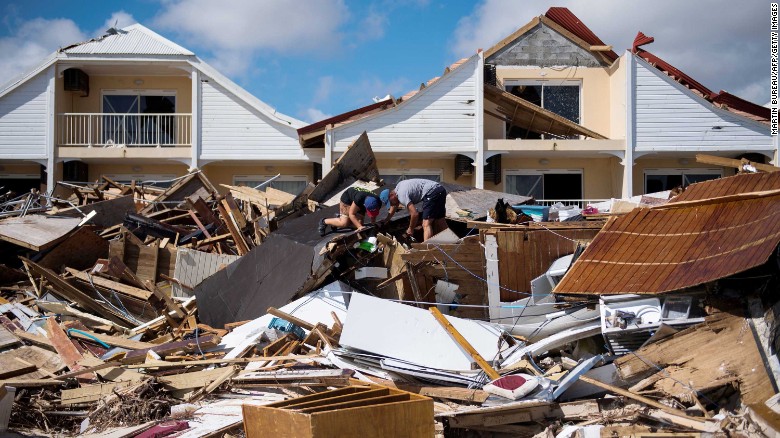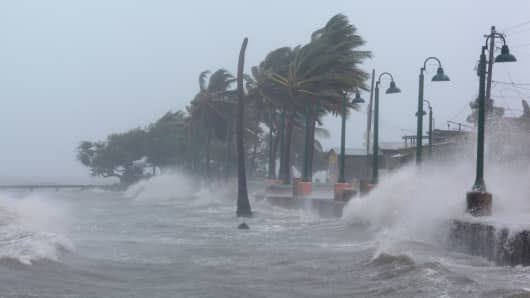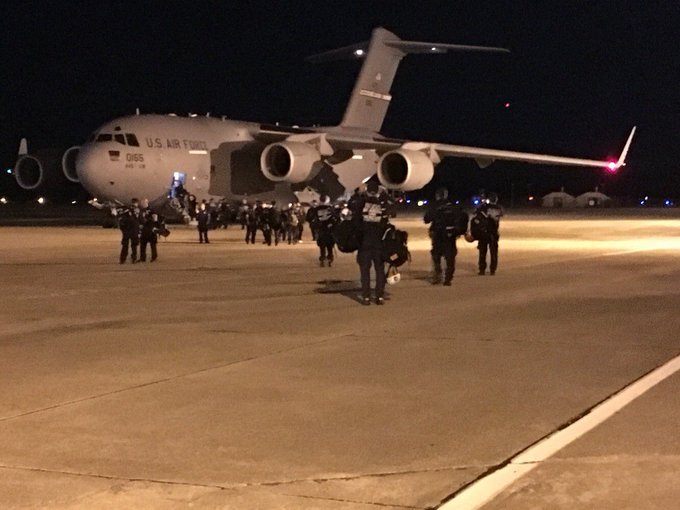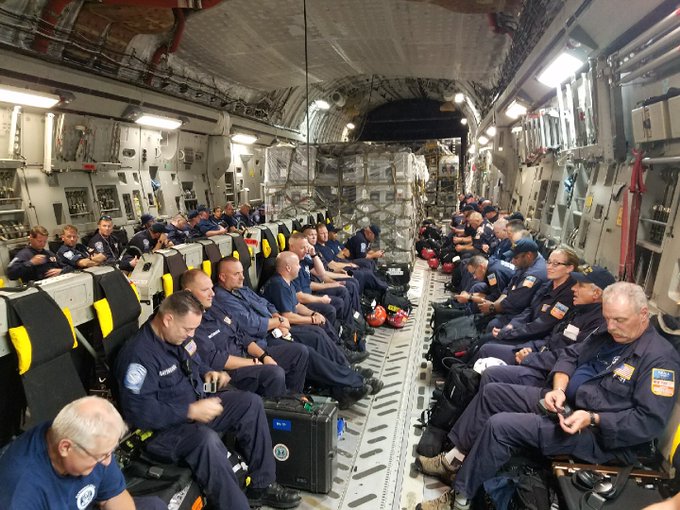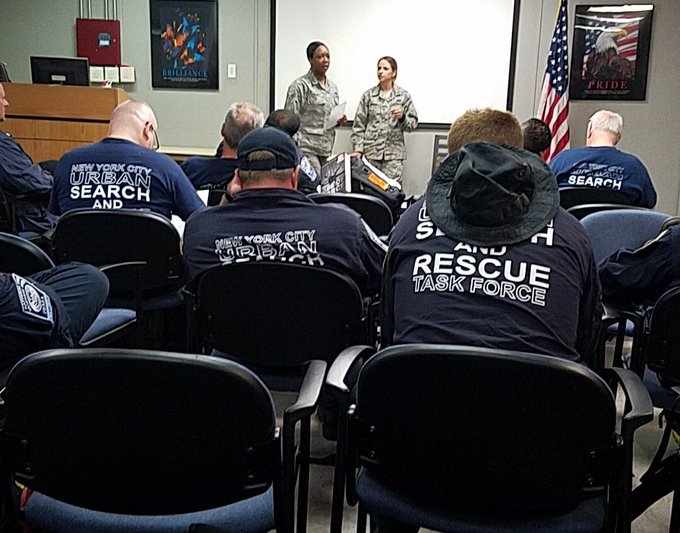he cases of Detroit and Greece are well known: Economic crises precipitated a crushing debt load and chaos as creditors demanded payment, ordinary citizens got squeezed, and millions of people lost their financial security.
Now, 1,000 miles off the coast of Florida, a small Caribbean island of 3.4 million American citizens is facing its worst economic crisis since coming under U.S. rule in 1898. A lengthy recession and continued emigration have left the government unable to pay its debt, which is expected to exceed 107 percent of its GDP by next year. And while Puerto Rico was spared the worst of Hurricane Irma, the storm killed at least three people, destroyed hundreds of homes,
knocked out the power grid, and exposed weak infrastructure. The U.S. Treasury, Congress, the Obama Administration, and other influential institutions such as the Council on Foreign Relations all acknowledge that without debt restructuring, Puerto Rico will be unable to reverse the disastrous economic track it is currently on.
Unfortunately, with the government seriously considering a set of austerity measures, the situation could worsen quickly. Last June, the U.S. Congress passed PROMESA (Puerto Rico Oversight, Management, and Economic Stability Act), a law intended to enable Puerto Rico to lift itself out of financial crisis. PROMESA authorized the creation of a Fiscal Control Board, a non-elected group tasked with overseeing the restructuring of Puerto Rico’s debt and economy. Earlier this year, the board approved the Puerto Rican government’s fiscal plan for 2017-2026, which included a number of austerity policies designed to slash the government’s budget and free up money for creditors. Among these measures are cuts to pensions, health care, and the University of Puerto Rico.
PROMESA’s own projections estimate a fall in GDP that would lead to another lost decade. Columbia University economists Martin Guzman and Joseph Stiglitz, both INET grantees, have
pointed out that while “the PROMESA board was supposed to chart a path to recovery, its plan makes a virtual impossibility.” At this crucial point in Puerto Rico’s history, Guzman, among others, has argued that the key players in Puerto Rico’s future—the PROMESA board, the Puerto Rican government, and the U.S. federal government—must take action to reverse course and foster sustainable economic growth, or face a downward spiral that will further deprive citizens of opportunities in their own land and intensify the migration pressures to the mainland. What’s more, the decisions PROMESA makes—regarding how to balance debt payments and public services, how far to take austerity measures, how transparent to be in its research and decisions—could set a precedent for future debt restructuring in municipalities, states, and sovereign nations worldwide.
Martin Guzman, a leading scholar in the field of public debt crises, recently partnered with the Center for a New Economy in San Juan, Puerto Rico to produce a report that analyzes the consequences of the Fiscal Plan approved by PROMESA’s Fiscal Control Board and to assess the restructuring needs for the island.
Anamaria Lopez: Why should Puerto Rico’s economic problems matter to everyone?
Martin Guzman: The current struggle in Puerto Rico has costs for everyone, both Americans living there and those living in the mainland. Puerto Rico has been in a deep recession that has made debt unsustainable—impossible to pay in full—and has decreased employment and led to fewer opportunities for its population.
Many Puerto Ricans have decided to migrate to the mainland, and the result is that as the recession aggravates, the fiscal revenues of the country decrease and the capacity for repaying debts decreases even more. As Puerto Ricans migrate, there are fewer people working on the island, especially those at the age of full-time work. So the government’s capacity to collect fiscal revenue decreases.
This vicious cycle is referred to in economics as a “destabilizing dynamics.”
The migration has costs for American taxpayers as well. If Puerto Rico’s crisis is not resolved, the economic and social crises, and the resultant migration crisis, are only going to be aggravated. Under the plan that was approved by the fiscal board created by PROMESA, the situation will soon get worse with all probability.
Puerto Rico is going to experience another lost decade in terms of economic activity, leaving even fewer opportunities and affecting the lives of many. Only a few bondholders who will get prioritized for repayment in the short term will benefit. Many creditors will lose as well, as the funds that will be available for future repayment will also decrease if the depression deepens further.
AL: It’s been about a year since the passage of PROMESA. Has it achieved what it set out to do?
MG: Not yet, and if the board doesn’t change its views on what Puerto Rico needs to do in order to get out of debt, PROMESA will actually hurt the island.
In order to help, PROMESA needs to ensure there is a macroeconomic plan in place that is aligned with the goal of economic recovery. What is clear is that if Puerto Rico doesn’t restore the sustainability of its debt position, there will be no economic recovery, and in order to restore debt sustainability there needs to be debt restructuring with a substantial write down—that is, a decrease in the face value—of Puerto Rico’s debt. But so far, it has been silent on the specifics of a debt-restructuring proposal.
Unfortunately the [Fiscal Control] Board approved a fiscal plan for the next decade, 2017–2026, that is not aligned with what Puerto Rico needs to recover. Even the creators of the plan project another lost decade for the country, and they’re being overly optimistic since their projections are based on assumptions that are not sound. They’re underestimating the consequences that the plan will have for the Puerto Rican economy and society.
As long as the board doesn’t settle on a sound macroeconomic plan with a sound debt restructuring proposal, PROMESA will not be fulfilling the role for which it was created.
AL: Are the problems with PROMESA mostly politics or economics? What’s making the process so prolonged?
MG: Debt restructuring of countries is generally a protracted process. Puerto Rico is in a special situation because it’s not a sovereign nation, it’s a U.S. colony, and it did not have a legal framework for restructuring debt until PROMESA was enacted. Restructuring debts without a proper legal framework as a bankruptcy law is generally chaotic. What we see in the sphere of sovereign debtors is that negotiations take too long and are too complex, and when debt relief is finally achieved it’s often too little, too late.
PROMESA offers a legal framework for restructuring debt, but there are multiple creditors with different interests, and the inter-creditor disputes make resolving the situation quite difficult. So we have to understand that the field in which these negotiations occur and the conflicts of interest among creditors matter: This is both an economic and a political problem. Eventually, the PROMESA Fiscal Control Board will have to take a position on whether it’s going to help Puerto Rico and the majority of the creditors, or whether it’s going to defend the interests of some creditors that could gain from a process that squeezes as much as possible from the country but doesn’t lead to economic recovery.
AL: Is the debt the most pressing issue facing the Puerto Rican people?
MG: Puerto Rico is experiencing three crises at the same time: a social crisis, an economic crisis, and a debt crisis. The debt crisis is the result of the economic crisis, but you cannot solve the social or economic crisis if the debt crisis is not resolved first. What this means is that if Puerto Rico doesn’t receive substantial debt relief that allows for a fresh start, it will not have the resources to implement the macroeconomic and development policies it needs to in order to recover in a sustainable way. That is why the first step has to be the debt restructuring.
AL: What economic impact is continued austerity—the cutting of government services—having on the lives of Puerto Ricans in the short term? Are there potential long-term economic and social consequences as well?
MG: In the short term, austerity aggravates the recession and reduces opportunities. The labor participation rate is already low, about two thirds of what it is in the mainland, the unemployment rate is close to 10 percent, and there have been continued increases in migration. Implementing the fiscal plan that was approved by the PROMESA board would mean more of that and an even deeper recession, especially in 2018 and 2019, and a more vulnerable situation for many— especially those who are already at risk. Cuts in spending in public education would also bode badly for the future. Knowledge is at the center of development, so it’s a bad idea to “save” on the investment in knowledge in a country that is attempting to find a more dynamic path of growth.
AL: You’ve described Puerto Rico as a colony. How does its “commonwealth” status impact the economic destiny of its people? Are they getting a fair deal?
MG: Puerto Rico is indeed a U.S. colony, and as such, it doesn’t have the power or the capacity to make its own decisions. Puerto Rican citizens have to rely on the intentions of a group of non-elected technocrats that will make decisions that will have a significant impact on their lives. This to some extent resembles what happened in Greece: Greece, a sovereign nation, de facto lost its sovereignty in the process of resolving its debt crisis. The Troika got the power and crushed Greece.
Will the Fiscal Board help or hurt Puerto Rico? Puerto Ricans will have to rely on the board’s intentions, which I believe will have political consequences one way or another. If PROMESA plays a positive role and board actually helps Puerto Rico, that can reinforce Puerto Ricans’ belief that there is solidarity between them and the U.S. Otherwise, sentiments could change in the opposite direction.
AL; Do you think Puerto Rico’s debt situation resembles that of other Latin American countries now or in the past? How is it alike or different?
MG: The most famous default in Latin America in the last 15 years was the one from Argentina in 2001. Argentina, like Puerto Rico now, was in a destabilizing macroeconomic dynamic. A recession began in 1998 and eventually evolved into a deep depression, with the unemployment rate going above 20 percent. But while Puerto Ricans can migrate to the U.S. and look for jobs there, Argentinians didn’t have an equivalent option because they didn’t have any other country where they could work legally. So what we saw was a massive increase in unemployment as well as massive social protests, which caused the problem to be addressed faster [there] than it is in Puerto Rico.
Argentina underwent the process of debt restructuring without a proper legal framework, and it was a complex process that lasted for a long time. It had to deal with a group of bondholders—the so-called vulture funds, which specialize in buying debt in situations of distress, much of that debt after default—at a low fraction of its face value. They then litigated, claiming full payment and interest, plus extra interest to compensate for not having been paid on time, even though they bought most of the bonds after the default.
However, Argentina did get substantial relief, so the amount of interest payments decreased significantly. This gave important breathing [room] to the government that was used for expansionary fiscal policies that helped the recovery.
The international context was also different than the one that Puerto Rico faces: The recovery occurred in the context of a boom in the prices of exports. The recovery that followed the debt restructuring was spectacular, but the lack of legal framework gave rise to vulture funds’ behavior that threatened to undo the entire restructuring process.
Unlike Argentina, Puerto Rico does have a legal framework for restructuring debt, PROMESA, that can be used to prevent chaos arising from potential lawsuits by vulture funds.
Another difference is that Argentina as a sovereign nation could run its own monetary policy, and this was an important element of the recovery that followed the default. Puerto Rico does not have that instrument, so it has to rely on institutional innovations and legal changes that increase the competitiveness of its tradable production.
So ultimately, there are similarities and differences with Argentina that need to be taken into account when designing an appropriate debt-restructuring plan for Puerto Rico.
Editor’s note: In this Q&A, Martin Guzman, research associate at Columbia University, Professor of Economics at the University of Buenos Aires, and senior non-resident fellow at the Center for a New Economy in San Juan, Puerto Rico, shares with INET his analysis of the crisis in Puerto Rico and what a real recovery would take.
The path of austerity could spread economic pain and social woes far beyond the Caribbean island, says public debt expert Martin Guzman
By Anamaria Lopez
Puerto Rico Is Getting Squeezed, and It Will Cost All of Us





